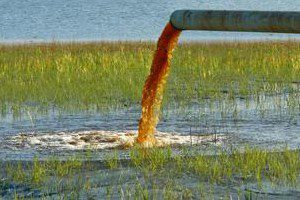
A new study reveals that two hazardous chemicals—ammonium and iodide—are being released and spilled into Pennsylvania and West Virginia waterways from fracking operations in the Marcellus shale. These substances can have a devastating impact on fish and ecosystems, and they are potentially harmful to human health, Scientific American reports. The chemicals are extracted from shale […]

Fracking Releasing Hazardous Chemicals into Local Waterways
A new study reveals that two hazardous chemicals—ammonium and iodide—are being released and spilled into Pennsylvania and West Virginia waterways from fracking operations in the Marcellus shale.
These substances can have a devastating impact on fish and ecosystems, and they are potentially harmful to human health, Scientific American reports. The chemicals are extracted from shale formations along with natural gas and oil during both hydraulic fracturing and conventional drilling operations, Duke University scientists report in a study just published in Environmental Science & Technology.The chemicals are making their way into streams and rivers, sometimes accidentally and sometimes through deliberate release from treatment plants that are not designed to handle these contaminants, according to the researchers. The study’s findings could have major implications in the debate over whether stronger regulations are needed for fracking and other drilling operations. The drilling industry has faced persistent questions about well designs that allow methane to seep into drinking water and about disposal of chemical-laced fracking water.
Ammonium and iodide, two naturally occurring, dangerous chemicals, are essentially unregulated in oil and gas wastewater, Scientific American reports. According to study co-author Avner Vengosh, professor of water quality and geochemistry at Duke’s Nicholas School of the Environment, the release of these chemicals is “causing direct contamination and human health risks,” and “should be regulated and it should be stopped.” This is “common sense,” Vengosh says.
When dissolved in water, ammonium can turn to ammonia, which is highly toxic to aquatic life. The Duke team found ammonium levels in streams and rivers from energy industry wastewater outflows at levels 50 times higher than the U.S. Environmental Protection Agency’s water-quality threshold. Fracking wastewater, however, is not regulated under the U.S. Safe Drinking Water Act, according to Scientific American. The Duke scientists found that the iodide – while not toxic by itself – promotes the production of disinfection byproducts when it comes in contact with the chlorine that is used to treat most drinking water systems. Previous studies have shown that these byproducts have toxic and carcinogenic properties. Only a few such byproducts are regulated, Scientific American reports.
The researchers said their study adds to a growing body of evidence that government action is needed to address the impact of energy industry wastewater disposal practices.


